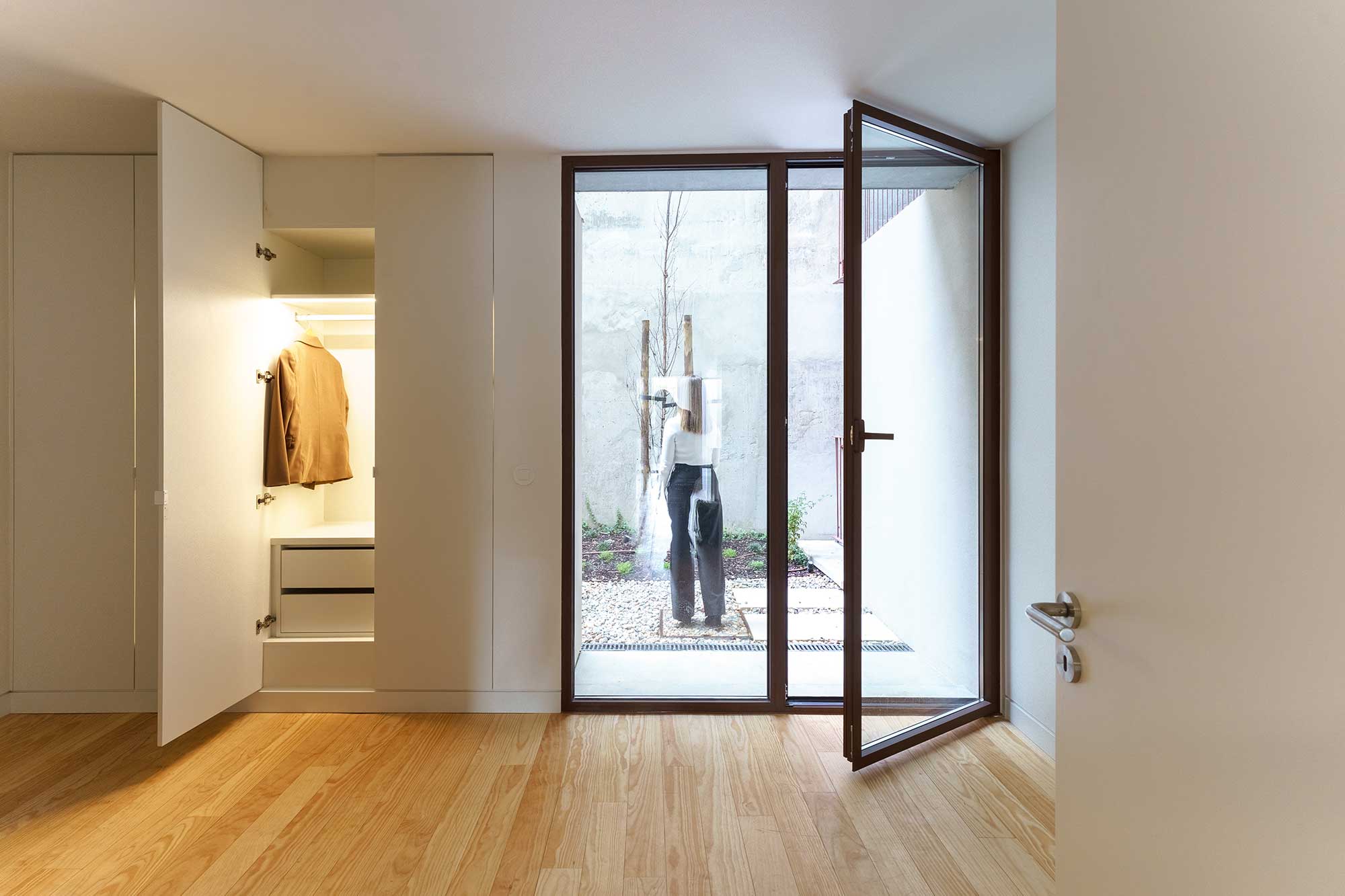- Details
- Category: Insights
The Importance of Natural Light in Architectural Projects
Natural light is one of the most valued elements in contemporary architecture. Far beyond an aesthetic issue, the way light enters, travels through and transforms a space has a direct impact on the comfort, functionality and even the health of its inhabitants.
In residential and urban projects, the management of natural light has become an essential criterion in the design of interiors and façades. Modern architecture in Portugal has been exploring this resource with sophistication, optimising its use through solutions that promote energy efficiency, well-being and the enhancement of properties.
1. Natural Light: More than illumination
The presence of sunlight in living spaces influences:
- The mood and psychological well-being of residents
- The regulation of the circadian cycle, promoting better sleep quality
- The perception of spaciousness and comfort of interior spaces
- Reducing dependence on artificial lighting, contributing to energy efficiency
Numerous studies prove that spaces with good sun exposure and natural ventilation promote healthier, more productive and more pleasant living environments.
2. Architectural Strategies to Enhance Natural Light
Successful projects integrate natural light right from the conceptual phase. Some practices include:
- Correct solar orientation of the building (maximising the sun to the south, minimising thermal losses to the north)
- Large glazed openings with efficient window frames
- Interior courtyards and skylights, which allow light into central areas of the building
- Water mirrors or clear surfaces that help reflect and diffuse light
- Strategic use of light colour palettes in the interior, which amplify natural lighting
3. Natural Light and Energy Efficiency
Integrating sunlight into architecture also has a direct impact on the energy performance of buildings.
- Reduces electricity consumption with artificial lighting
- Helps with passive heating during the winter
- Improves the thermal performance of spaces, provided it is combined with adequate shading and ventilation systems
This approach is in line with the principles of NZEB (Nearly Zero Energy Building) buildings - such as the Azure project, promoted by Addsolid, where energy efficiency and natural comfort are pillars of architectural design.
4. Light as an Element of Property Enhancement
Natural light is one of the factors most valued by buyers and investors. Well-lit properties are:
- More pleasant to visit and photograph
- Perceived as more spacious and modern
- Preferred in all market segments, from the mid-market to the premium segment
- More sought after in the urban rental market
At Addsolid, all developments are designed with attention to the relationship between light, space and materials.
The Montisnávia project, for example, combines the restoration of a mansion and an old factory with new volumes of contemporary architecture, designed to maximise the entry of natural light into the flats, creating elegant, functional and bright environments.
At Penha Living, in Lisbon, the extension of the original building enabled the creation of apartments with open views over the river and generous glazed openings, which guarantee light throughout the day.
Natural light has ceased to be a mere technical attribute and has become a central feature of contemporary architecture. By favouring health, reducing energy costs and enriching the experience of living, it has become synonymous with quality, comfort and sophistication.
By strategically integrating this element into its projects, Addsolid reinforces its commitment to an architecture of excellence, designed to meet people's real needs and the environmental challenges of the present and the future.
Get to know our projects and discover how the right light transforms the way we live.








